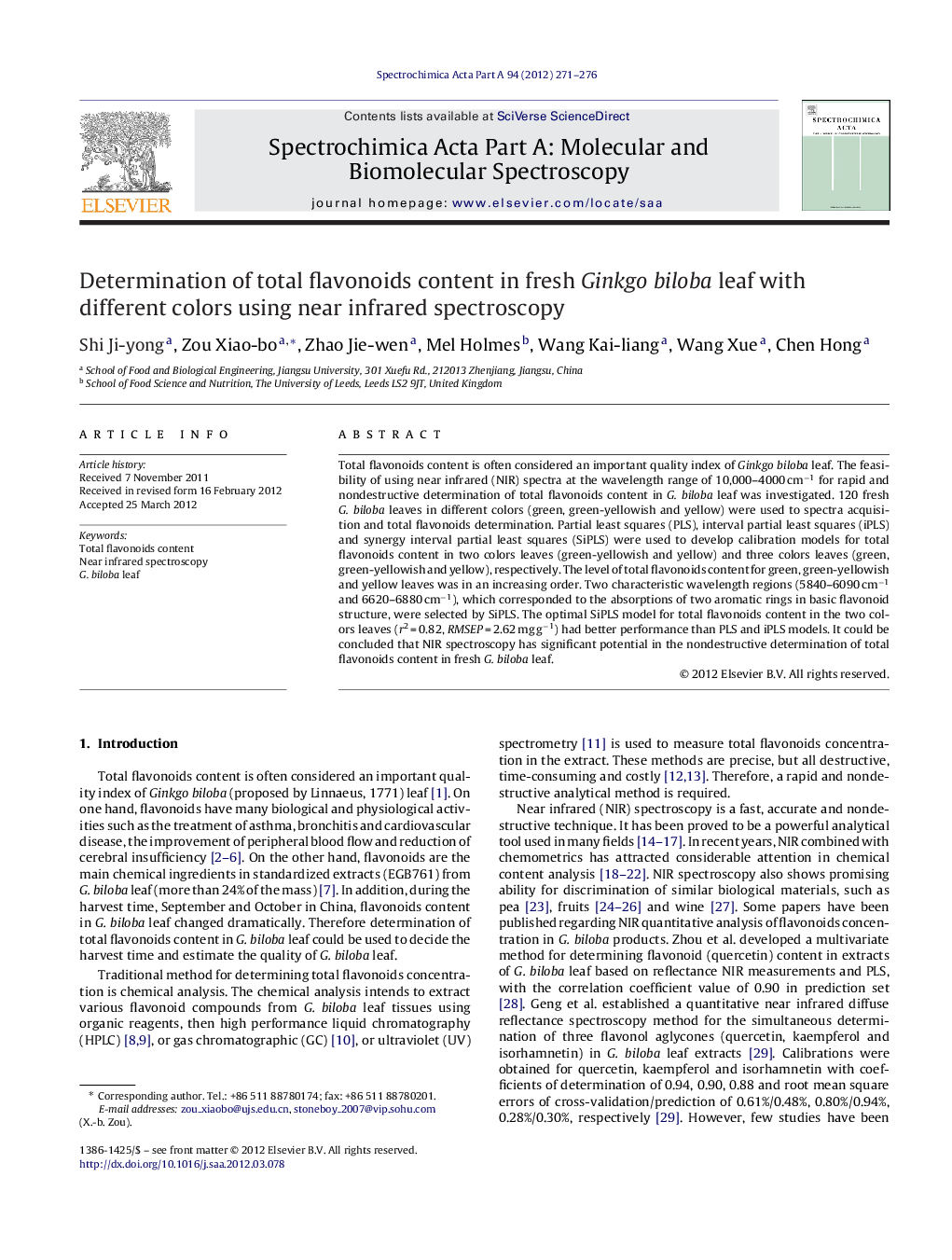| Article ID | Journal | Published Year | Pages | File Type |
|---|---|---|---|---|
| 1231431 | Spectrochimica Acta Part A: Molecular and Biomolecular Spectroscopy | 2012 | 6 Pages |
Total flavonoids content is often considered an important quality index of Ginkgo biloba leaf. The feasibility of using near infrared (NIR) spectra at the wavelength range of 10,000–4000 cm−1 for rapid and nondestructive determination of total flavonoids content in G. biloba leaf was investigated. 120 fresh G. biloba leaves in different colors (green, green-yellowish and yellow) were used to spectra acquisition and total flavonoids determination. Partial least squares (PLS), interval partial least squares (iPLS) and synergy interval partial least squares (SiPLS) were used to develop calibration models for total flavonoids content in two colors leaves (green-yellowish and yellow) and three colors leaves (green, green-yellowish and yellow), respectively. The level of total flavonoids content for green, green-yellowish and yellow leaves was in an increasing order. Two characteristic wavelength regions (5840–6090 cm−1 and 6620–6880 cm−1), which corresponded to the absorptions of two aromatic rings in basic flavonoid structure, were selected by SiPLS. The optimal SiPLS model for total flavonoids content in the two colors leaves (r2 = 0.82, RMSEP = 2.62 mg g−1) had better performance than PLS and iPLS models. It could be concluded that NIR spectroscopy has significant potential in the nondestructive determination of total flavonoids content in fresh G. biloba leaf.
Graphical abstractFigure optionsDownload full-size imageDownload as PowerPoint slideHighlights► Ginkgo leaves with different colors at harvest time were analyzed. ► Total flavonoids content for green, green-yellowish and yellow leaves was in an increasing order. ► NIR technique was used to determine total flavonoids content in Ginkgo leaf. ► SiPLS calibration model with two characteristic wavelength regions got better performance. ► The two regions were corresponded to the absorptions of basic flavonoid structure in UV–vis spectra.
